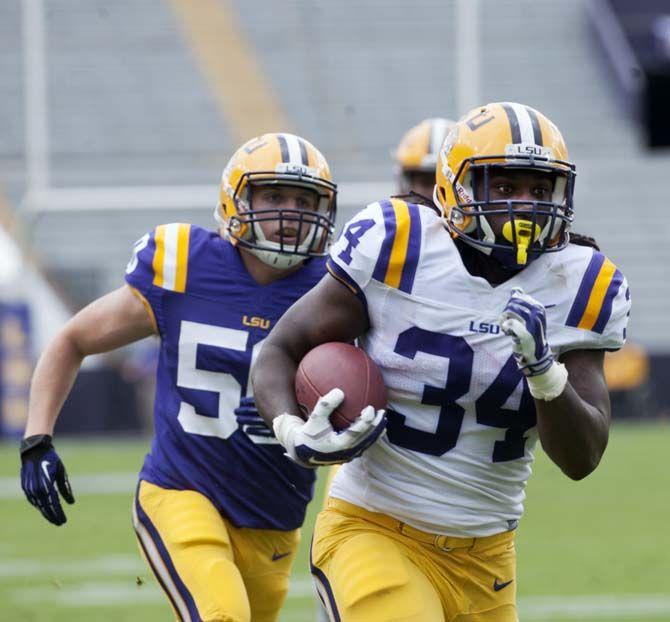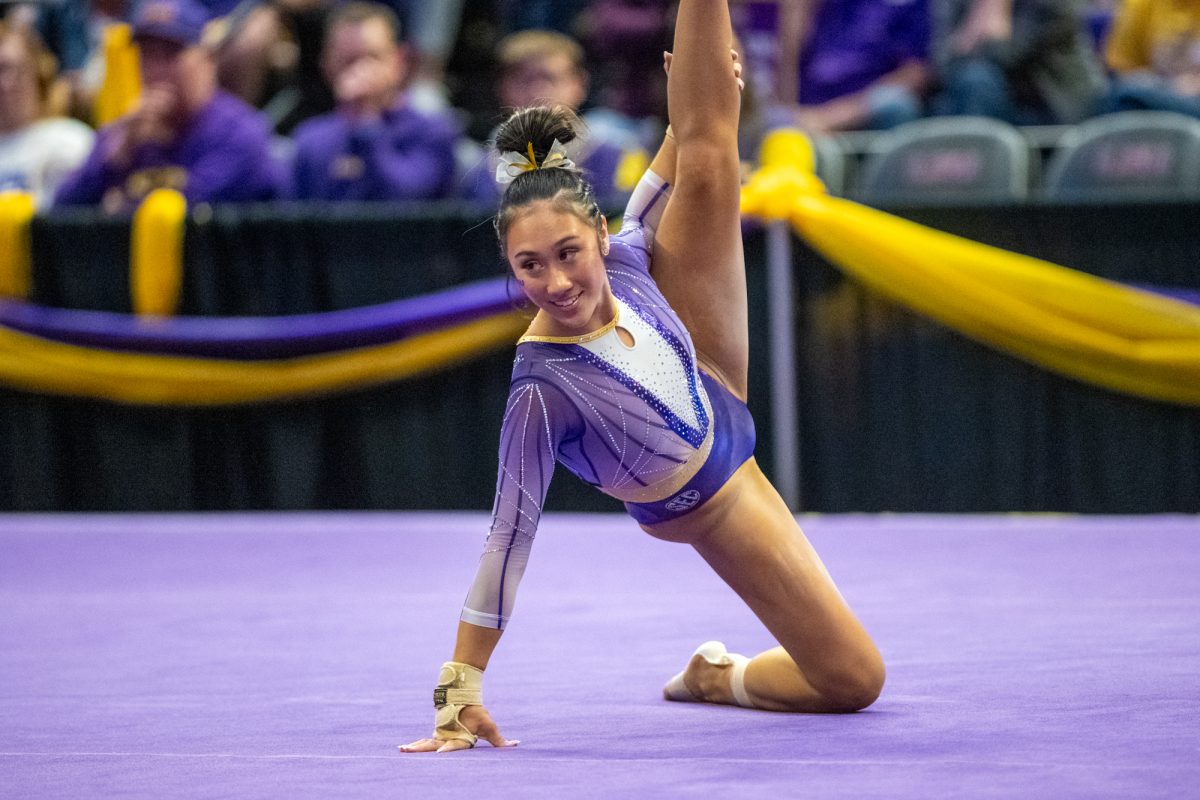In today’s age of football, a two running back system isn’t just a luxury. It’s often times preferred.
While most teams desire a feature player in its backfield, an additional tailback who can spell the primary option and give defenses a different look makes an offense more dynamic.
But if the feature back is sophomore Leonard Fournette, one of the most heralded players to step foot in Baton Rouge, cementing a role becomes difficult for the No. 2 back.
That’s the objective for sophomore Darrel Williams — the other running back in LSU’s 2014 recruiting class.
“It really doesn’t matter who’s in there,” said sophomore quarterback Brandon Harris. “I’ll take either one. Darrel gets in there, and there’s no drop off at all.”
Williams’ numbers last season were pedestrian compared to his senior year at John Ehret High School, but that’s not necessarily any fault of his own. The 4-star prospect from Marrero, Louisiana, joined an already veteran backfield with seniors Terrence Magee and Kenny Hilliard while jockeying for playing time with Fournette.
With sparse playing time, Williams finished the season with 64 carries, which was fifth on the team, for 302 yards and three touchdowns. All three of those scores and 102 of his yards, though, came in the second and third games of last season.
Like most freshmen, the transition from playing on Fridays to the bright lights of college football on Saturdays was an eye-opener.
“It was way different,” Williams said. “A bigger environment and way more people from all different states. You got to get used to it.”
But Williams didn’t shy away from an opportunity to make an impact last season, even if it was at a different position.
In the second quarter against UL-Monroe on Sept. 13, 2014, Williams stepped in at fullback and burst up the middle on 3rd-and-1, bouncing off tacklers on his way to a 22-yard touchdown.
The 6-foot, 230-pound Williams was lined up in front of Fournette, a personnel grouping offensive coordinator Cam Cameron has considered continuing to employ.
“We would like to think we could build on that a little bit,” Cameron said. “You’re always going to have a set where you’re going to put your best 11 out there, whoever those best 11 are. You rank your players from best to worst. At some point in time, you need a personnel group that’s got your best 11. There’s a chance those two are in our best 11.”
But fullback was actually the third position Williams has played.
In his junior season at John Ehret, Williams started at quarterback, rushing for more than 1,000 yards to match 27 touchdowns. He said his ability to understand offensive schemes and a defense’s rotation, such as identifying how many safeties are on the field, was due to his time under center.
Even with experience reading defenses, Williams picked the brains of Hilliard, Magee and even fellow freshman Fournette last season.
“All three of them helped me out tremendously with the playbook and different concepts,” Williams said. “Learning the different defenses was the main thing. You got to know the defenses. You can’t just know what you’re doing on offense.”
With solid football prowess, Cameron said he is impressed with Williams’ timing with the offensive line in different formations.
“From the pistol, the glock, the far, the near and all the sets we run, he knows how to make that subtle adjustment and create timing with the guards, the tackle and the tight ends,” Cameron said.
Perhaps the biggest improvement Williams has made from last season wasn’t on the field.
Much like Fournette, Williams’ size is both an advantage and a hindrance, preventing the backs from maximizing their true speed. As Cameron pointed out, Williams could be as heavy as 255 pounds, but carrying lean muscle mass is paramount.
But Fournette was inspired by more than Williams’ dedication to getting in proper shape.
“In the beginning of [last] season, [Williams] taught me a lot because he caught on to the blocking scheme so fast,” Fournette said. “So, I was still learning from him. I appreciate him for still helping me to this day. Without him, I wouldn’t be where I’m at.”
While both Fournette and Williams are excited about being a formidable one-two punch, the No. 2 back isn’t afraid to keep pace with the No. 1 back.
“I’m the type of back that likes to compete,” Williams said. “I’m not going to run from competition. That’s what I love to do. That’s how you get better. That’s how you be great at what you want to do and what you want to become.”
You can reach James Bewers on Twitter @JamesBewers_TDR.
LSU running back Williams hopes to complement Fournette in rushing attack
April 20, 2015
LSU sophomore runningback Darrel Williams (34) runs the ball during LSU white squad’s 45-6 victory over LSU purple squad during the annual Spring Football game on Saturday, April 18, 2015 in Tiger Stadium.
More to Discover







